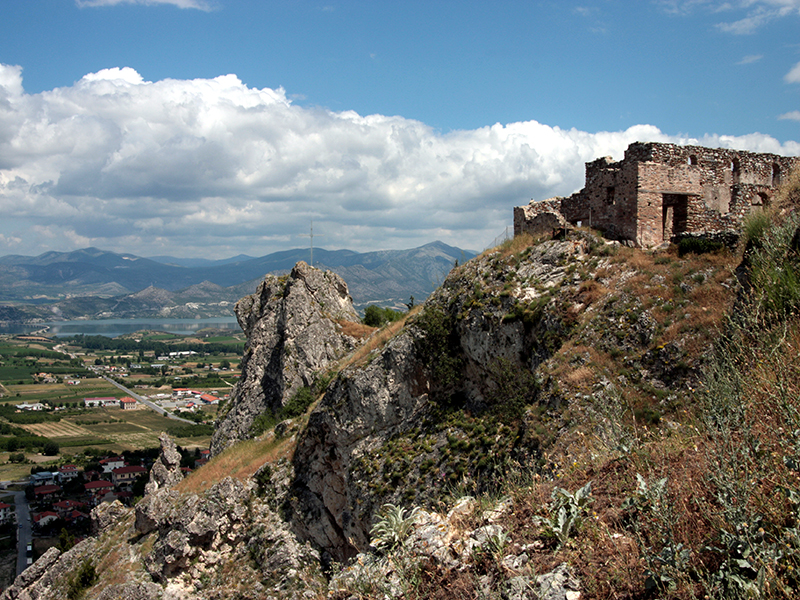The Katihoumeni Basilica in Servia is located on the northwestern corner of the Castle City of Servia and was its episcopal church. It dates back to 1000 ad, but has undergone some changes in various periods, from the 12th to the 16th century.
The Basilica is three transept, with a narthex and an elevated central aisle with a lightwell. The aisles are separated by walls, where four arched openings are found. In the first building phase, the central aisle was roofed by a wooden span roof and the sides by a skillion roof, while the central aisle was connected with the sides by “trivilous” (three lobbed arch openings).
A three layered mural decoration is saved at this monument. The first layer is contemporary with the first building phase of the church. The second dates back to the 13th century, when Michael was bishop, while the third, fragments of which were exposed during the latest excavating works, dates back to the 15th-16th century. The mural fragments that were found at the southern aisle that in the early post byzantine period was a chapel, are really interesting.
It is an image of the Savior Enthroned Pantocrator, the hands of a praying person and part of Saint Dimitrios image that are probably part of a representation of Deesis. These murals combined with other parts, such as floor parts at the two side aisles and the third layer of the murals, which is saved at the northern and southern aisle, show that the Basilica operated at the side aisles, at least until the 16th-17th century.
Only ruins of the church are saved today. In the framework of its restoration study, during 1995-2000, fixing works, mural maintenance works, as well as excavating works were carried out. These works brought to light valuable data about the monument’s history.
















